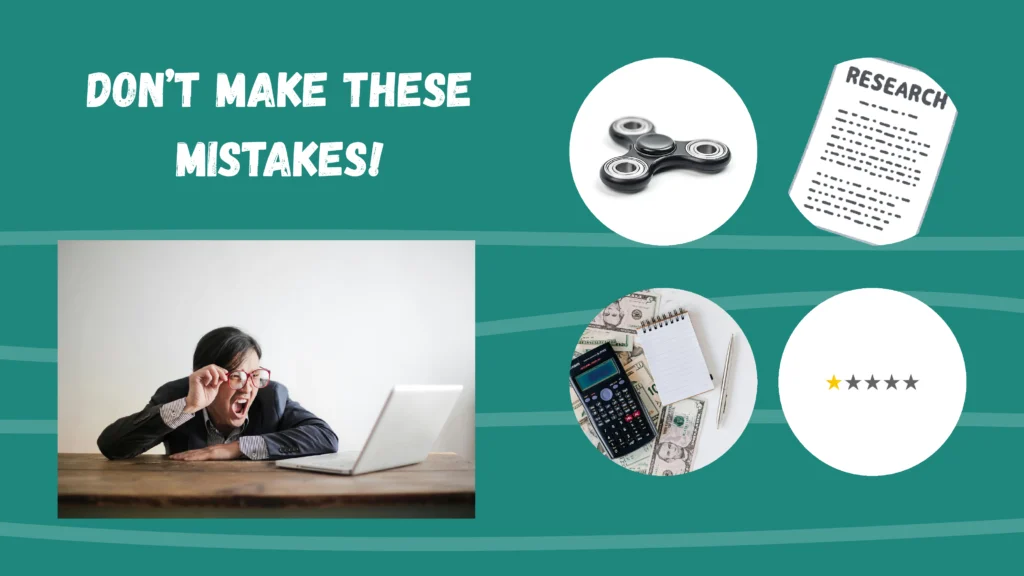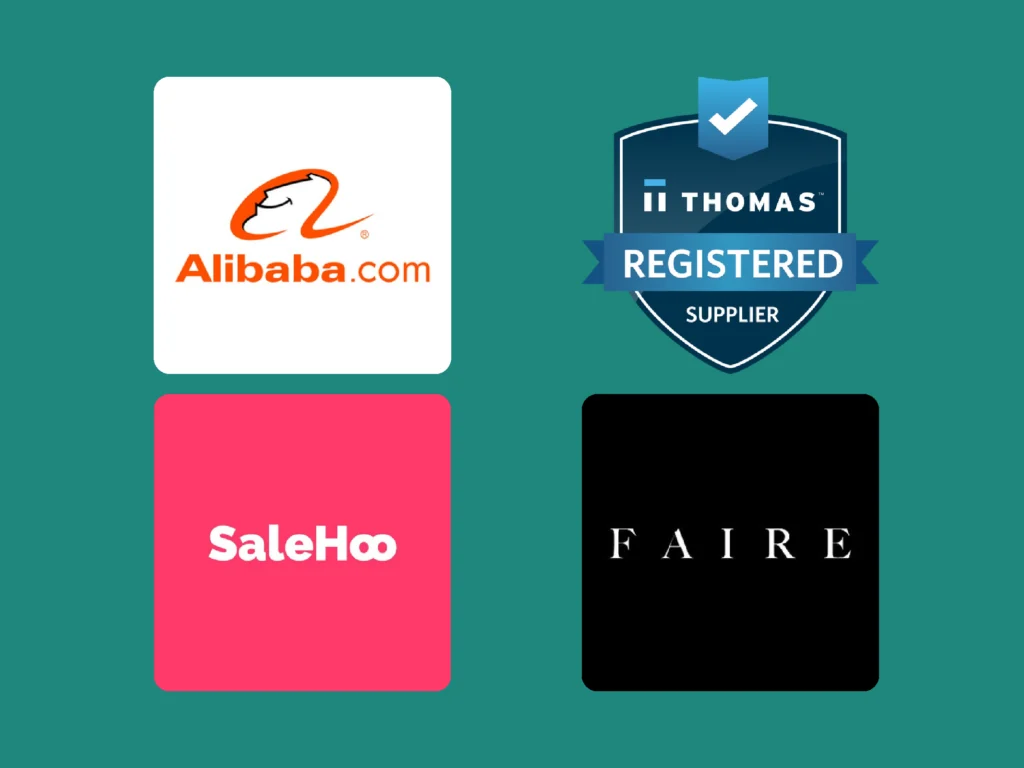Discovering the perfect product to sell on Amazon is the foundation of a successful Amazon business. However, even the best idea won’t succeed without a strong Amazon product sourcing strategy to bring it to life. Understanding how to source products for Amazon effectively is the foundation of any successful selling strategy. Your chosen method will impact everything from your startup costs to your long-term scalability.
In this guide, we’ll walk you through how to source products to sell on Amazon, including the best sourcing methods to help you find reliable suppliers, ways to control costs, and what you can do to set your business up for long-term success. Whether you’re just starting, have hit a wall in your sourcing efforts, or are looking to optimize your Amazon sourcing strategy, we’ll dive into this complex topic to help you get the answers you need.
Navigating the Challenges of Product Sourcing
Why Product Sourcing Is Key to Amazon Success
It’s not hyperbolic in the slightest to say that product sourcing is integral to the health of every Amazon business. Elements of your sourcing strategy impact every part of your business, from product quality to your bottom line.
Effective sourcing leads to higher sales and increased profit by ensuring you have quality products that meet customer expectations while maintaining healthy margins.
Additionally, the sourcing process helps you better understand market demand and competition. By researching products and Amazon FBA suppliers thoroughly, you’ll gain valuable insights into pricing trends, quality standards, and customer preferences that can shape your broader business strategy, insights that you can’t truly learn from the sidelines. Sellers with a deeper understanding of best sourcing tactics and strategy are infinitely more likely to build their brand successfully, adding to their product catalog and avoiding missteps that all too frequently plague sellers looking to expand their Amazon footprint.
Common Product Sourcing Mistakes Amazon Sellers Make

Navigating the Amazon product sourcing world is fraught with pitfalls that can undermine even the most promising business ventures. Understanding these common mistakes is crucial for sellers aiming to establish a sustainable and profitable presence on Amazon.
- Choose trending products without long-term demand
- Ignoring supplier reliability and product quality
- Not considering Amazon fees, logistics, and hidden costs
- Failing to conduct adequate market research before committing to a product idea
- Overlooking customer reviews that reveal unmet needs or product flaws in existing offerings
By recognizing and steering clear of these common product sourcing errors, Amazon sellers can significantly enhance their chances of success. A strategic approach to sourcing, focusing on long-term viability, supplier reliability, and a comprehensive understanding of all associated costs, is essential for building a robust and enduring Amazon business.
Pros and Cons of Different Amazon Sourcing Methods
There are multiple ways to source products for Amazon. Each method has its own advantages and challenges:
Retail Arbitrage
Retail arbitrage involves purchasing discounted products from retail stores and reselling them at a higher price on Amazon. It’s a great way for new sellers to start with minimal investment.
- Pros: Low startup costs, quick entry to the market
- Cons: Limited scalability, inconsistent inventory, risk of price fluctuations
In our experience, retail arbitrage works best as a side hustle or an entry strategy rather than a long-term business model. We’ve seen new sellers use this method to generate initial capital before transitioning to more scalable approaches.
Pro Tip: To succeed in retail arbitrage in the long run, focus on niche categories with less competition rather than chasing highly saturated markets.
Wholesale
With wholesale, sellers buy bulk quantities of branded products from manufacturers or distributors at a lower cost and resell them on Amazon. This method provides a steady supply of inventory with recognized brand names.
- Pros: Bulk purchasing, established brand recognition, consistent inventory supply
- Cons: Higher upfront investment, competition with other sellers, dependency on brand restrictions
When exploring wholesale sourcing opportunities, remember that established products typically have predictable sales patterns, making inventory planning more straightforward, but they often come with slimmer profit margins due to competition from other resellers selling identical items.
Private Label Sourcing
Private label selling allows sellers to create their own branded products by working with manufacturers. This approach enables full control over competitors’ branding, pricing, and differentiation. According to various reports, private label sellers make up 55-60% of the seller marketplace on Amazon, so many of our tools devoted to finding the best products to sell are tailored for private label products.
- Pros: Brand control, higher profit margins, potential for brand loyalty
- Cons: Requires significant investment in branding, marketing, and product development
Private label is the strategy we typically recommend for sellers looking to build a sustainable business with genuine growth potential, and our tools are made with private label sellers in mind. While this method requires more upfront work and investment, the long-term opportunity is virtually limitless, as brands can expand product lines and branch outside of Amazon, whether on their own sites or in big box retailers like Walmart and Target.
Dropshipping
Dropshipping is a fulfillment method where sellers list products on Amazon without holding inventory. When a sale is made, dropshipping suppliers handle packaging and shipping products directly to customers, reducing upfront costs and eliminating inventory management concerns.
- Pros: No need to manage inventory, low-risk model, minimal upfront investment
- Cons: Lower profit margins, supplier dependency, longer shipping times, potential stock issues
While dropshipping can seem attractive due to its low barrier to entry, be aware that Amazon has become increasingly strict about dropshipping policies. Sellers must ensure they’re compliant with Amazon’s terms of service to avoid account suspension.
Before sourcing a product, it’s integral to understand which selling method fits your goals, as this plays a preeminent role in approaching the sourcing process.
Finding the Right Product: What Amazon Sellers Should Look For
Finding a profitable product on Amazon starts with identifying high-demand, low-competition opportunities.
To simplify this process, Viral Launch’s Market Intelligence and Product Discovery tools are indispensable. These tools provide comprehensive data on product demand, competition levels, and market trends, enabling you to make informed decisions quickly and reverse engineer products with all the signals that foreshadow success. With these resources, you can confidently select products that meet customer demand and have the potential for long-term success on Amazon, all while saving countless hours of research and eliminating the guesswork related to selecting a product without the advantage that years of Amazon marketplace data can offer.
While it’s tempting to study Amazon Best Sellers when sourcing products to sell on Amazon, be careful—many top sellers are established brands with resources that new sellers simply can’t match. Rather than competing directly with these giants, I recommend using product research tools to identify high-demand, low-competition opportunities flying under the radar. Analyze customer reviews to uncover what buyers actually want and where existing products fall short. This targeted approach helps you find viable niches where your products can gain traction without facing impossible competition from major brands.
Pro Tip: It’s impossible to overstate the importance of product research in finding the right product to sell on Amazon. It’s why we exist! Our industry-leading Amazon product sourcing tools are designed to streamline this process as much as possible, and we’ve created an eBook on how to use them to find winning products and a comprehensive guide on how to do product research right.
Solutions and Strategies for Sourcing the Perfect Amazon Product
Where to Source Amazon Products: Top Supplier Options
Before we dive into which websites you can use to connect with manufacturers, let’s quickly go over an important aspect to consider as you sift through potential suppliers: location.
International vs. Domestic Suppliers
- Domestic suppliers: Higher quality, faster shipping, but higher costs
- International suppliers (China, India, Vietnam): Lower prices, but longer shipping times and potential quality concerns
Over the years, many sellers curious about where to source products to sell on Amazon have found their answer in international suppliers, particularly from China, who ship directly to Amazon warehouses thanks to their competitive pricing and fast production capabilities. However, recent tariff rates and concerns over trade wars have caused many sellers to rethink their strategy when selecting Amazon FBA suppliers. Choosing international manufacturers exposes your business to regulatory changes that can impact your bottom line. Sellers need to stay informed about tariff shifts to keep their operational costs under control. You’re in luck, we’ve just created a free tariff calculator to help you make smarter sourcing decisions.
Choosing the right supplier is critical for FBA sourcing success. Here are some top options:
Top Supplier Marketplaces

When searching for where to source products for Amazon, these platforms consistently deliver results for our sellers:
- Alibaba: Best for private label products and bulk orders; the largest global marketplace connecting manufacturers (primarily Chinese) with buyers
- ThomasNet: Ideal for wholesale sourcing with an emphasis on connecting sellers with North American suppliers with over 500,000 manufacturers
- SaleHoo: Great for finding verified suppliers with a curated directory of pre-vetted manufacturers and wholesalers
- Faire: Growing platform focusing on unique, boutique wholesale products from independent brands
- AliExpress: Better for smaller orders and samples, though typically at higher per-unit costs than Alibaba
Each platform serves different needs depending on your sourcing strategy, product type, and order volume. I recommend creating accounts on multiple platforms to compare options before committing to a supplier.
Verify Supplier Reliability: How To Avoid Scams and Poor Quality Products
Getting into business with an unprofessional supplier is every Amazon private label seller’s worst nightmare, so establishing partnerships with reliable suppliers is crucial for the success of your e-commerce business. To ensure you’re working with trustworthy partners, it’s essential to recognize warning signs, verify credibility, and formalize agreements before it’s too late.
Red Flags To Look Out for When Evaluating Suppliers
Red flags about untrustworthy suppliers can appear in many ways and at various stages of the sourcing process. Keep a careful eye on these aspects, where scammers, fraudsters, and manufacturers who may be problematic may reveal themselves.
- Inconsistent Communication: Difficulty in obtaining timely responses or clear answers can signal reliability issues. Reliable suppliers should be easily reachable and communicative.
- Unrealistic Pricing: Prices significantly lower than the market average might indicate poor quality or fraudulent activity. It’s important to compare pricing across multiple suppliers. If it sounds too good to be true, there’s a good chance that it is.
- Negative Reviews and Lack of References: Obvious, but critical nonetheless. Consistently negative feedback or a supplier’s reluctance to provide client references can be warning signs. Reputable suppliers should be willing to share references.
- No Physical Address or Contact Details: A legitimate business should have a verifiable physical address and reliable contact information. If they list an address, run it through Google to ensure it looks legitimate.
What You Can Do To Avoid Untrustworthy Suppliers
While the tips above help defend against bad actors, you can also play some offense. We recommend exhausting all of the steps listed below, regardless of your selling experience or interactions with potential suppliers, but these weigh especially heavy when you encounter a supplier with red flags.
- Request Product Samples: Before committing to a large order, request samples to assess product quality, packaging, and delivery times. This helps ensure the products meet your standards.
- Check Reviews and Testimonials: Look for feedback on independent websites, industry forums, and social media to gauge the supplier’s reliability and customer service.
- Verify Business Licenses and Certifications: Ask for copies of business licenses and relevant certifications. Authentic suppliers will provide these documents, confirming their legitimacy.
- Use Supplier Verification Services: Platforms like SaleHoo offer directories of pre-vetted suppliers, reducing the risk of scams and ensuring quality partnerships.
While frauds and scammers are very rare, they’re not completely unheard of. In most instances, vetting a manufacturer is more about turning your product idea into a reality that lives up to expectations and negotiating deals that set your business up for success.
Negotiation Tactics: How To Get the Best Deal From Suppliers

Lower Product Costs Without Compromising Quality
Cost-saving negotiations don’t have to mean cutting corners. Start by researching market prices for similar products and be prepared with data to support your offer. Ask for volume-based discounts or value-added services like improved packaging or bundled shipping to maximize value. Always emphasize your potential as a long-term customer to strengthen your position.
How To Negotiate Minimum Order Quantities
Minimum Order Quantity (MOQs) help suppliers maintain production efficiency and profitability but aren’t always set in stone. If the supplier’s MOQ is higher than you’re comfortable with, ask whether they offer a tiered pricing model based on order volume. You can also negotiate by offering to start with a smaller order to test the market, promising larger reorders if the product performs well.
If you intend to sell an item with variations or one that could potentially have variations, such as different sizes or colors, ask about how variations would apply to MOQs. Some may let you combine variations under a single order to meet the required MOQ, while others may not.
Flexibility can be an Amazon seller’s best friend, and addressing issues about adaptability that might spring up later should be discussed before deciding upon your supplier.
Build Long-Term Supplier Relationships
Building a positive, professional relationship with your supplier can lead to long-term benefits like priority production, better pricing, and access to new product lines. Be consistent, communicate clearly, and pay on time. Getting in the good graces of your suppliers can have tremendous benefits down the road, and they’re the backbone of your business, so treating them well isn’t just the professional thing to do, it’s also the smart thing to do.
Ways To Strengthen Supplier Relationships:
- Send holiday greetings and remember key contacts’ names
- Provide feedback on how their products are performing in your market
- Share your growth plans so they can prepare for your future needs
- Pay invoices promptly or even ahead of schedule when possible
With all of this in mind, the prospect of negotiating can be intimidating for new sellers or those who may be less assertive, but remember, good negotiation doesn’t have to be a shakedown filled with threats or lowballing. Engage in good-faith negotiations and understand that it’s all about finding the ideal middle ground for a mutually beneficial business relationship. Just as you shouldn’t take a bad deal, neither will the supplier, and both parties need to feel valued for the relationship to flourish.
Quality Control: Ensure Your Products Meet Amazon Standards
Deciding upon a product and finding a manufacturer who will supply that product at a reasonable price does not mark the end of the sourcing process. Although it can be tempting to make a deal and go on to the next step of setting up your business, this is no time to get anxious or antsy, it’s time for quality control before moving forward.
When you bypass proper quality control measures, you’re gambling with your business reputation and finances. Neglecting thorough product quality testing might appear acceptable at first, but testing before going live can help you avoid serious problems later. These issues can include damage to your account health, harm to your brand reputation, increased returns and negative reviews, reduced visibility, and many other challenges that are much harder to fix once they arise. It’s better to prevent these complications from the beginning.
While it’s helpful for you to receive the product and see if it lives up to your expectations, you can also utilize professional third-party inspection services like QIMA, Intertek, and SGS, which provide peace of mind and objective quality inspections that you can also use in your listing details and marketing materials to showcase your care for quality. You can expect to pay a few hundred dollars for an inspection, but it can easily save you thousands in the long run.
Remember, your product needs not just to be the bare minimum but to compete with quality products from marketplace rivals, so be as thorough as possible. If you’re sourcing your first product, this product is your brand and business, so have high expectations and do your due diligence to deliver a product that customers will appreciate, inspire positive reviews, and lead to customers buying again.
Legal & Compliance Considerations for Amazon Product Sourcing
Receiving a cease and desist order or legal document that threatens the existence of your business is the last thing you want. Before committing to a product and sourcing for Amazon, ensure it meets all legal requirements:
- Avoid Amazon-restricted products
- Check for trademark and intellectual property (IP) issues
- Understand customs, tariffs, and import regulations
Understanding legal and compliance factors is essential for long-term success. Failing to meet Amazon’s policies or legal regulations can result in listing removal, fines, or account suspension. By proactively addressing these considerations, sellers can protect their businesses, avoid costly legal issues, and maintain smooth operations on Amazon.
FAQs About Amazon Product Sourcing
What Is Amazon Product Sourcing?
Amazon product sourcing is the process of finding a supplier who will manufacture your selected product to sell on the Amazon marketplace. But it isn’t just about finding someone who will make it. It involves researching market opportunities, finding reliable suppliers, negotiating terms, conducting quality control, and establishing supply chains that ensure consistent product availability while avoiding expensive fees from overstocking.
Where Can I Source Amazon Products?
As mentioned earlier, Alibaba, ThomasNet, SaleHoo, Faire, and Aliexpress are proven platforms for private label and wholesale sellers. Retail arbitrage sellers can find products anywhere: thrift shops, garage sales, discount stores like TJ Maxx or Marshalls, and clearance sections at big box retailers like Walmart or Target. Dropshippers can source products anywhere online that can fulfill the orders in a timely manner while leaving room with pricing for profits.
What’s the Best Sourcing Method for New Amazon Sellers?
For those who want a long-term, steady business on Amazon, private label selling is likely the way to go. It’s the standard selling experience in which sellers find a product idea, work with a supplier on design, and begin sourcing products to sell on Amazon. Wholesaling offers many of the same perks as private labeling but with less control over the product and how it’s presented. For newer sellers looking for a side hustle or dipping their toes into the Amazon waters, dropshipping and retail arbitrage presents a lower-risk option to make some money.
How Can I Tell if a Product Is Profitable Before Sourcing It?
Run the numbers first! Use tools like our free FBA calculator to analyze market demand, competition, and pricing trends. Look for products with steady search volume and manageable competition. Create a detailed cost analysis, including product cost, shipping, Amazon seller fees, advertising, returns, and any other potential fees that may arise before proceeding.
What’s the Biggest Mistake Amazon Sellers Make in Sourcing?
One of the most common mistakes made in Amazon sourcing is not calculating all fees included in the sourcing and selling process from the start. While it’s understandable for beginning sellers to focus only on purchase and selling prices, missing critical costs like shipping, duties, Amazon fees, advertising, returns, and storage can spell disaster for a new Amazon business. This incomplete math leads to vanishing margins once you’re selling. Generally speaking, passing on a product is better than getting stuck with inventory that barely breaks even.
Final Thoughts on Sourcing Amazon Products
Discovering great product ideas and executing smart sourcing strategies are two primary components in the foundation of a promising Amazon business. Starting on Amazon can be intimidating and anxiety-inducing, but by understanding the game you’re playing and sticking to your purpose at every stage, you can come out of the sourcing process primed for a successful product launch and long-term selling journey.
By applying the strategies outlined throughout this article, you can avoid common pitfalls, choose the selling model that fits your goals, vet reliable suppliers, negotiate effectively, and enforce rigorous quality controls. If you can navigate through these stages with poise and discipline, you’ll set yourself up for consistent growth, stronger margins, and happier customers.
Ready to take the next step? Unlock your competitive edge with Viral Launch to test the game-changing tools that can transform your Amazon selling experience. From discovering winning product ideas to streamlining your business strategies and uncovering advantages in your product market, our Amazon-centric tools assist sellers like you in taking your business to the next level.








